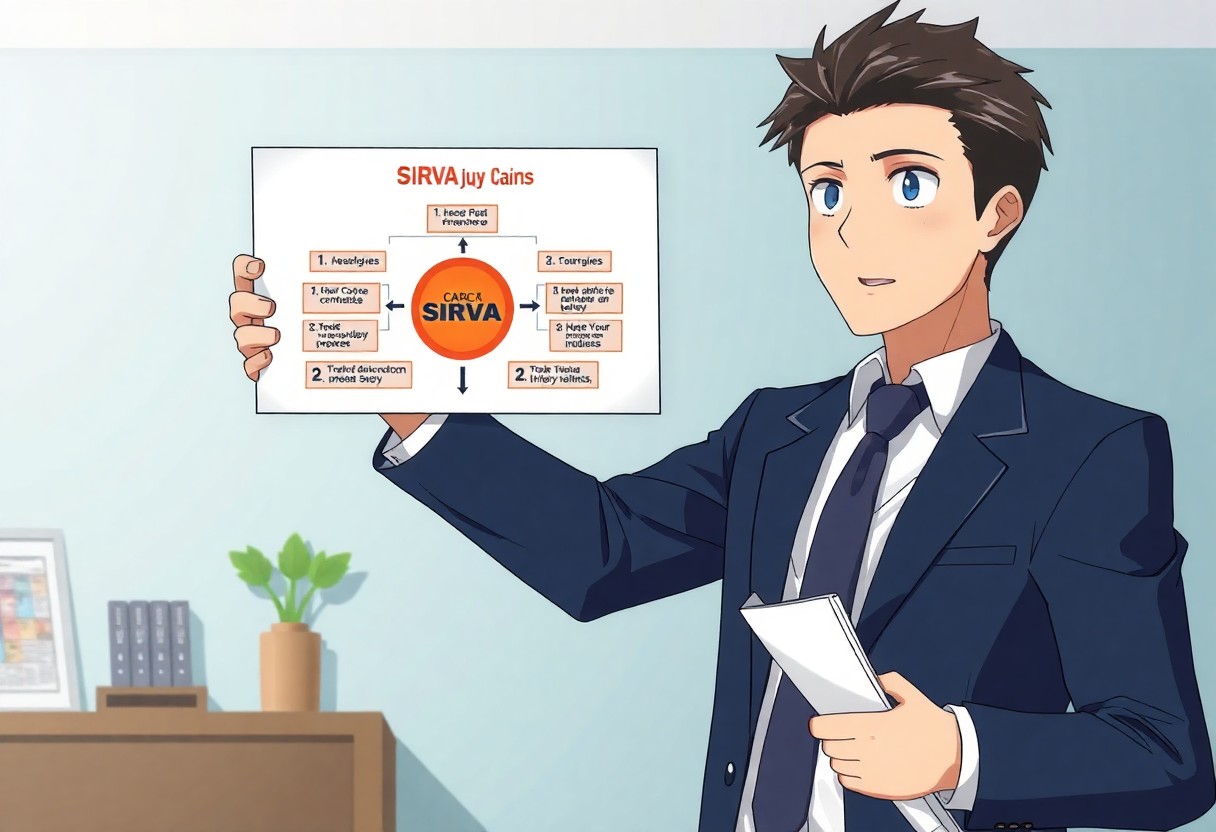You may find yourself facing the challenges of a SIRVA (Shoulder Injury Related to Vaccine Administration) injury, which can complicate your life both physically and financially. Understanding your rights and the legal process is important to obtaining the compensation you deserve. This guide will provide you with clear, step-by-step information to help you navigate your SIRVA injury lawsuit, empowering you to make informed decisions along the way. Whether it’s gathering evidence or understanding legal terms, we’ve got you covered in this comprehensive breakdown.
Understanding SIRVA Injuries
Your understanding of SIRVA injuries is vital in recognizing their impact on your life. SIRVA, or Shoulder Injury Related to Vaccine Administration, occurs when a vaccination leads to shoulder pain or injury. This type of injury can greatly affect your daily activities and overall well-being.
Types of SIRVA Injuries
Your awareness of different SIRVA injuries can help you identify the best course of action if you experience pain after a vaccination. Common types of SIRVA injuries include:
- Rotator cuff injuries
- Bursitis
- Tendonitis
- Frozen shoulder
- Shoulder impingement syndrome
Assume that identifying these injuries early can lead to more effective treatment and recovery.
| Type of Injury | Description |
| Rotator Cuff Injury | Damage to the muscles and tendons surrounding the shoulder joint. |
| Bursitis | Infection or inflammation of the shoulder bursa, causing pain. |
| Tendonitis | Inflammation of tendons in the shoulder area, often resulting from overuse. |
| Frozen Shoulder | Stiffness and pain in the shoulder joint that restricts movement. |
| Shoulder Impingement | When shoulder tendons are repeatedly trapped during arm raises. |
Common Causes of SIRVA
Any vaccination can potentially lead to SIRVA injuries, especially if the injection is not administered properly. Various factors contribute to the likelihood of developing SIRVA injuries after vaccination.
To prevent SIRVA injuries, it is important to ensure that vaccinations are administered by trained healthcare professionals. Improper injection technique, such as injecting too high on the shoulder or at an incorrect angle, can lead to shoulder trauma. Additionally, underlying pre-existing conditions may heighten your susceptibility to injury. By recognizing these common causes, you can take proactive measures to safeguard your health during vaccination procedures.
Assessing Your SIRVA Injury
The evaluation of your SIRVA injury is an necessary step in understanding the extent of your condition and pursuing a potential claim. It involves identifying the specific nature of your injury, how it has affected your daily life, and the overall impact on your well-being. By gathering relevant information, you can lay a strong foundation for your case.
Factors to Consider
On this journey to assess your SIRVA injury, you should consider several critical factors that contribute to your overall situation:
- Duration and severity of symptoms
- Impact on daily activities
- Previous medical history
- Medical treatment received
- Future care and therapy needs
Any of these aspects can significantly influence your treatment options and potential compensation.
Symptoms and Diagnosis
Your symptoms may vary, but common indications of a SIRVA injury include pain, limited range of motion, swelling, and tenderness in the shoulder region. Proper diagnosis is key, and it typically involves a thorough physical examination and may require imaging tests.
The diagnostic process for SIRVA includes evaluating your symptoms and medical history, which helps healthcare professionals determine the root cause of your discomfort. Following a thorough assessment, the doctor may recommend treatment options ranging from physical therapy to pain management techniques, ensuring that you receive the appropriate care tailored to your specific needs.
The Legal Process
You will encounter several stages in the legal process of your SIRVA injury lawsuit. Understanding each step is important so you can navigate the journey effectively and ensure your rights are protected. From the initial filing to the resolution of your case, knowing what to expect will help you feel more in control of the situation.
Step-by-Step Guide to Filing a Lawsuit
Filing a lawsuit involves several steps that you must carefully follow. Below is a simple breakdown:
| Step | Description |
| 1. Consult an Attorney | Seek legal advice to evaluate your case. |
| 2. Gather Evidence | Collect medical records and documentation of your injury. |
| 3. File a Complaint | Officially submit your case to the court. |
| 4. Serve the Defendant | Notify the responsible parties of the lawsuit. |
| 5. Discovery Phase | Exchange evidence with the opposing party. |
| 6. Trial or Settlement | Resolve the case through trial or negotiation. |
Important Deadlines and Statutes of Limitations
Clearly, adhering to deadlines and statutes of limitations is vital for your lawsuit. Each state has specific timeframes within which you must file your claim, and failing to meet these deadlines could bar your case from being heard.
This means that you must act promptly after your injury occurs. Typically, the statute of limitations for personal injury cases varies by state, often ranging from one to three years. Be aware that additional time may be needed for specific circumstances, such as filing a claim against a government entity. Consulting with a knowledgeable attorney early on can help you determine the appropriate timelines for your case to ensure you proceed without any unnecessary delays.
Legal Representation
After experiencing a SIRVA injury, securing legal representation can significantly impact the outcome of your case. An attorney with specific experience in personal injury law will understand the nuances involved in SIRVA lawsuits and can advocate effectively on your behalf, navigating the complexities of the legal system to pursue the compensation you deserve.
Pros and Cons of Hiring a Lawyer
You can weigh the benefits and drawbacks of hiring a lawyer to determine if it’s the best decision for your situation.
Pros and Cons
| Pros | Cons |
|---|---|
| Expert legal knowledge | Legal fees may be expensive |
| Stronger negotiating power | Time commitment for meetings |
| Increased chances of a favorable settlement | Stress of legal process |
| Access to a network of professionals | Potential for misunderstandings |
| Less emotional burden on you | Possibility of settling for less than worth |
Tips for Choosing the Right Attorney
An effective approach to selecting a lawyer involves thorough research and consideration of various factors. You should prioritize attorneys who specialize in personal injury and have a solid track record with SIRVA cases. Here are some tips to guide your decision:
- Check for relevant experience and expertise
- Look for client testimonials and reviews
- Inquire about their success rate in similar cases
- Evaluate their communication style and availability
- Discuss fees and payment structures upfront
Knowing which questions to ask will help ensure you find an attorney who is the right fit for your case.
With a clear understanding of what to look for in an attorney, you can make a more informed decision. Consider meeting with multiple lawyers to assess their compatibility with your needs and goals. Here are some additional points to consider:
- Assess their familiarity with SIRVA-related laws
- Ask about their approach to client representation
- Confirm their willingness to take your case to trial, if necessary
- Explore their negotiation strategy and techniques
- Ensure they have the resources to support your case
Knowing these aspects will empower you to choose a legal representative who will best support your claims and needs.
Financial Considerations
Now that you understand the basics of SIRVA injury lawsuits, it’s important to consider the financial aspects involved. Successful claims can lead to compensation for your medical expenses, lost wages, and other damages. However, understanding the potential costs can help you make informed decisions throughout the process.
Potential Compensation for SIRVA Injuries
Injuries resulting from SIRVA can drastically affect your quality of life. If you pursue a lawsuit, you may be eligible for compensation covering your medical bills, therapy costs, lost income, and pain and suffering. Calculating the full extent of your damages can help you create a strong case.
Costs Associated with Filing a Lawsuit
Any legal process comes with its own set of costs. These might include filing fees, attorney fees, and other expenses related to gathering medical records and expert testimonies. Being aware of these costs can help you plan accordingly.
Plus, you should consider the possibility of upfront legal fees and how they are structured. Some attorneys offer contingency fee agreements, meaning they only get paid if you win your case. However, other costs may still accumulate throughout the lawsuit, so ensure you have a clear understanding of all potential expenses before proceeding.
Tips for Victims
Once again, as a victim, you must take proactive steps to strengthen your case. Here are some tips to help you navigate the legal landscape:
- Keep detailed records of your injuries and treatments.
- Gather all evidence related to your injury, including photos and witness statements.
- Consult with an attorney who specializes in SIRVA cases.
- Stay organized with all documentation and correspondence.
- Be honest during legal evaluations and depositions.
Any effort you put into these steps can significantly impact your case‘s outcome.
Documenting Your Injury
To build a strong case, documenting your injury is imperative. Maintain a log of your symptoms, treatments, and any limitations you experience due to the injury. Include dates, providers, and treatment plans, along with receipts and bills for medical expenses. Strong documentation will provide a clearer picture of your situation to support your lawsuit.
Preparing for Legal Proceedings
Assuming you are serious about your claim, preparing for legal proceedings requires careful thought and action. Gathering all relevant information and understanding the legal process can significantly affect your success rate. You will want to assemble not only your medical records and bills but also evidence related to how the injury has impacted your daily life and work capacity.
Injury cases can be intricate, requiring a thorough understanding of not just your circumstances, but also the legal framework governing SIRVA claims. You may face depositions that require you to articulate your experiences clearly. Bring in any witnesses who can corroborate your claims, and be prepared to answer questions about how your injury has altered your lifestyle. Being well-prepared means you can present your case confidently, showcasing the full extent of your losses as a result of the injury.
Conclusion
Drawing together the information outlined in this guide, you should now have a clearer understanding of the steps involved in pursuing a SIRVA injury lawsuit. From gathering medical evidence to filing your claim, each part of the process is vital in building a strong case. By knowing your rights and the proper protocols, you can navigate this challenging situation more effectively, ensuring that you seek the compensation you deserve for your injury.


















